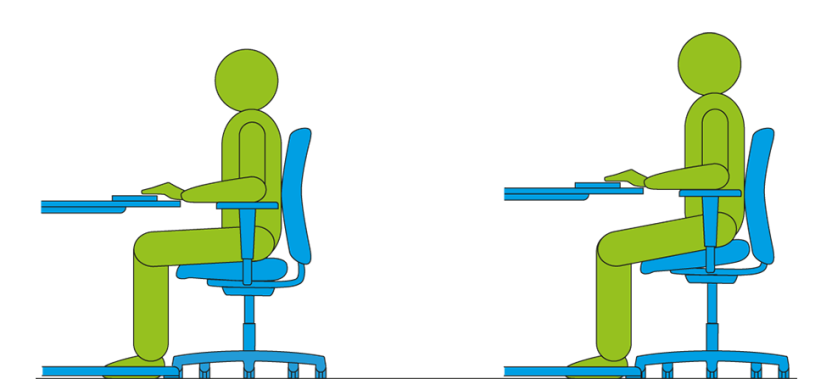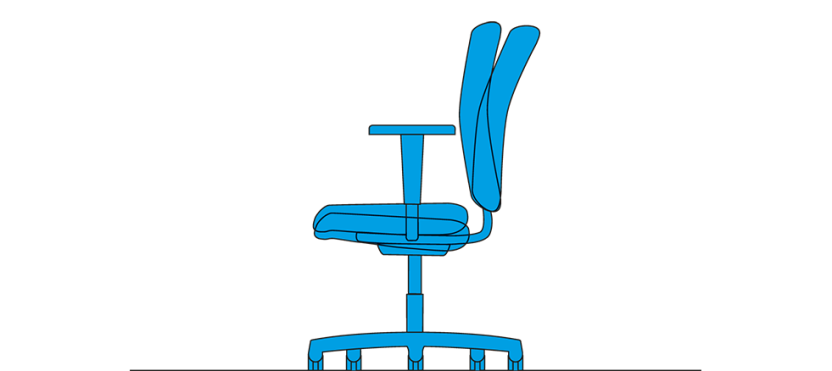


10 Factors for Healthy Sitting
- The swivel chair carries the GS mark for tested safety.
The GS mark guarantees, among other things, stability, strength and durability. Products with GS certification comply with current standards. - The seat height is adjustable.
Adjusting the seat height correctly helps to prevent blood congestion in the legs. It also provides the basis for a relaxed sitting posture. - The seat is depth-sprung.
When sitting down, the seat yields slightly. This prevents compression of the spine. - The backrest is sufficiently high.
To provide adequate support for the entire body, the backrest should reach at least up to the shoulder blades. - The backrest has a clearly perceptible lumbar support.
The forward curve in the lumbar region supports the back, especially in an upright sitting position. The lumbar support should be clearly noticeable but must not press uncomfortably against the spine when leaning back. - The entire backrest or the lumbar support is height-adjustable.
Effective back support can only be achieved if the lumbar support can be set to the correct individual height. - The chair enables dynamic sitting.
This is usually provided by a synchronised mechanism: when leaning back, the backrest tilts backwards while the seat tilts at the same time. The chair follows the body’s natural movements. - The swivel chair is equipped with height-adjustable armrests.
Armrests relieve the shoulder area and help prevent muscular tension. They also support the back-friendly act of sitting down and standing up. - The armrests or arm pads are adjustable in width or pivotable.
This ensures that every user can use the armrests comfortably without feeling restricted. - The base is fitted with castors suitable for the type of flooring.
Hard castors with a plain-coloured side surface must only be used on carpets and other soft floor coverings. Soft castors for wood, stone or other hard floors can be recognised by their two-tone side surface.
Additional Aspects to Consider
- Large opening angle when leaning back
Backrests that tilt only a few degrees offer little relief for the spine. The backrest should tilt backwards by at least 30 degrees. - No “shirt-pulling effect”
When leaning back, the backrest must follow the user’s back precisely. If the backrest shifts upwards during movement, the lumbar support also changes position. This can cause uncomfortable pressure and the so-called shirt-pulling effect. - No lifting of the seat’s front edge
If the seat’s front edge rises noticeably when leaning back, pressure builds under the thighs, which can impair circulation. - Weight adjustment
The resistance of the backrest must be adjustable to the user’s body weight. Leaning back should be possible without effort, while the backrest should also support the user’s return to an upright posture. Adjustments should be possible while seated; ideally via controls that can be operated from an upright position.
For Even More Movement While Sitting
- 3D effect
The latest generation of office chairs combine dynamic sitting with lateral mobility of the seat and/or backrest.
In the Anglo-American world, some workstations are equipped with a combination of non-height-adjustable standing desks and high counter chairs. This allows a simple switch between sitting and standing. However, ergonomists advise against such setups for two reasons: 1) They are not barrier-free, 2) During seated phases, the range of movement is severely restricted. The same applies to the use of exercise balls, stools or kneeling chairs at workstations.
A far better solution is the combination of dynamic office chairs with sit-stand desks.




